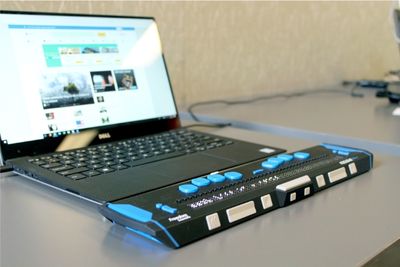Daily News
Consider Adding Alt Text Descriptions to Your Images for World Braille Day and Beyond
January 4, 2023

CINCINNATI, Ohio -- On World Braille Day we celebrate Louis Braille who invented the reading system of raised dots in 1824 when he was just 15 years old.
Today, braille is one of many available tools designed to increase accessibility and independence for those who are blind or visually impaired.
Screen readers allow people with visual impairments to read the text displayed on the screen with a speech synthesizer. These programs are available for most devices; many are free, but costs for some can run into the thousands.
On this World Braille Day, we at the Cincinnati Health Department encourage you to consider the use of alternative text (alt text) for images, audio files, videos, and all other non-text elements published online. While some social media outlets will automatically apply alt text, for greater accuracy you can view and edit what has been generated.
The following are guidelines for the use of alt text from USA.gov:
- Write appropriate alt text for images:
- When you use a graphic with legible text, the alt text must contain the graphic’s exact text. However, when possible, avoid using images of text or graphics with text. People who have low vision and/or use screen magnification software to read text will have a difficult time reading graphics of text because they become pixelated.
- Don’t include the words “image of” or “graphic of” (screen readers already say that the item is an image). Sometimes, it’s appropriate to say that a graphic is a drawing, caricature, photograph, diagram, etc.
- With the exception of acronyms, avoid typing your alt text in all caps. This causes some screen readers to spell the words instead of speaking them as words.
- Sometimes, a graphic doesn't need alt text:
- If an image is decorative or doesn’t convey content, it doesn’t need alt text.
- See 4 Syllables’ “Alt Text Decision Tree” for more help.
- Infographics: If you want to use an infographic, you must provide a complete transcript of the infographic on your page. Enter the transcript in the asset’s transcript field in the CMS.
By improving the accessibility of your online content, you ensure that people who are blind or visually impaired will more fully enjoy the information, insights, and humor that you share with the world.
Helpful Links:
Opportunities for Ohioans with Disabilities
USA.gov: Accessibility Style Guide
American Foundation for the Blind: Screen Readers
United Nations: World Braille Day
